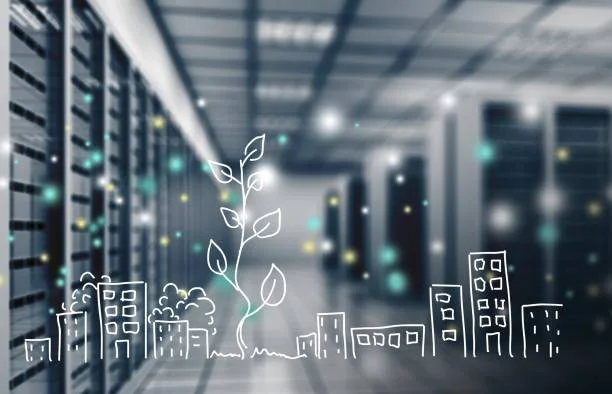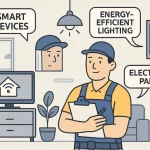In recent years, the demand for sustainable data centers has been rising steadily. As industries and businesses continue to grow their digital presence, the environmental footprint of maintaining massive data infrastructures has come under increasing scrutiny. This article delves into the reasons behind this demand, explores the measures being taken to build eco-friendly data centers, and discusses how these innovations are set to shape the future of the tech industry.
Understanding the Environmental Impact of Data Centers
Data centers are critical to modern society. They are the backbone of the digital economy, housing the servers that store and process the vast amounts of data we generate daily. From social media interactions to online shopping transactions, data centers are responsible for the operation of nearly every digital service we use.
However, this immense growth in digital infrastructure comes at a cost. Data centers consume vast amounts of energy, contributing to significant carbon emissions. According to the International Energy Agency (IEA), data centers accounted for about 1% of global electricity demand in 2020, with projections showing that this share could rise substantially in the coming years.
This energy consumption is largely due to the need for cooling systems to keep the servers at optimal temperatures. In fact, cooling alone can represent up to 40% of a data center’s total energy use. As global temperatures rise and energy demands increase, the need for more sustainable solutions becomes ever more urgent.
The Push for Green Data Centers
The growing awareness of climate change and its effects has spurred many industries to adopt sustainable practices. Data centers, once criticized for their environmental impact, are now part of the global shift towards sustainability. Companies are increasingly investing in green technologies and practices to minimize the carbon footprint of their operations.
One of the most significant changes in recent years is the transition to renewable energy sources. Many leading tech companies, such as Google, Microsoft, and Amazon, have pledged to power their data centers using 100% renewable energy. These companies are not only shifting their energy consumption to wind, solar, and hydroelectric power but are also working to influence their suppliers to do the same.
In addition to renewable energy, data center operators are also focusing on energy-efficient design and construction. For instance, server racks and cooling systems are being optimized to reduce energy usage. The integration of artificial intelligence (AI) and machine learning (ML) in managing data center operations helps further streamline processes, predict energy demands, and adjust cooling systems in real-time to minimize waste.
Data Center Staffing: Key to Sustainable Operations
While technology plays a crucial role in making data centers more sustainable, human expertise remains essential. Data center staffing is a critical aspect of ensuring that these innovations are implemented and maintained effectively. Skilled professionals are needed to monitor energy usage, oversee renewable energy integration, and ensure that sustainable practices are consistently followed.
Moreover, as data centers become more advanced, the demand for specialized skills is growing. From data scientists and AI engineers to energy efficiency experts, the workforce behind green data centers is diverse and highly specialized. These experts are at the forefront of developing new technologies, optimizing operations, and finding innovative solutions to reduce the environmental impact of data center operations.
The shift towards sustainable practices in data centers is not just about technology—it’s about having the right people in place to drive change and implement strategies that align with global sustainability goals.
Sustainable Building Materials and Design
Another key aspect of creating eco-friendly data centers is the use of sustainable building materials and design practices. Traditional construction materials, such as concrete and steel, have a large carbon footprint due to the energy required to produce and transport them. In contrast, sustainable materials like recycled steel, bamboo, and low-carbon concrete are gaining traction in the industry.
Incorporating energy-efficient building designs is equally important. Green roofs, smart insulation, and advanced lighting systems are just a few of the architectural innovations that contribute to a more sustainable data center. These design elements reduce energy consumption by improving insulation and reducing the need for artificial lighting.
Furthermore, data centers are increasingly being built in locations that take advantage of natural cooling. For example, some data centers are situated in colder climates, where the natural environment helps regulate temperature, reducing the need for energy-intensive cooling systems.
Continue your journey: This related article is worth your time.
Innovations in Cooling Systems
As mentioned earlier, cooling represents a significant portion of a data center’s energy consumption. To combat this, companies are adopting innovative cooling technologies that are far more energy-efficient than traditional methods.
One promising approach is liquid cooling, which uses liquid coolants to absorb heat from servers. This method is more efficient than air cooling, as liquids have a higher heat capacity and can transfer heat more effectively. Another innovation is the use of evaporative cooling, where water is used to cool air, significantly reducing energy usage compared to traditional air conditioning systems.
In addition to these technologies, data centers are exploring the potential of free cooling, which leverages natural environmental conditions such as cold air or water to maintain optimal temperatures. For example, some data centers in Scandinavia have harnessed cold outside air to cool their facilities, drastically reducing their reliance on electricity.
The Role of Automation and Artificial Intelligence
The implementation of automation and artificial intelligence (AI) is another game-changer for sustainable data centers. These technologies allow data centers to become smarter and more efficient in managing their operations.
AI-driven systems can monitor energy usage, identify inefficiencies, and make real-time adjustments to cooling and power systems. For example, AI can predict peak energy usage times and adjust the data center’s power consumption accordingly, ensuring that energy is used only when necessary. Additionally, AI can assist in predicting when equipment needs maintenance, preventing costly breakdowns and reducing waste.
By integrating AI into their operations, data centers can reduce their environmental impact while improving performance and cost-effectiveness.
Looking Ahead: The Future of Sustainable Data Centers
As the demand for data and digital services continues to grow, the need for sustainable data centers will only increase. The industry is already making strides towards minimizing its environmental impact, but much work remains to be done. For data centers to remain sustainable in the long term, there must be a continued focus on innovation, collaboration, and investment in green technologies.
Governments and regulatory bodies also play an essential role in supporting sustainable data centers. As governments around the world implement stricter environmental regulations, the pressure will grow on data center operators to meet sustainability goals. This will likely lead to more incentives for renewable energy adoption, stricter emissions standards, and increased collaboration between the private and public sectors.
Ultimately, the future of data center is one where sustainability and efficiency go hand in hand. As technology evolves, data center will continue to be at the forefront of the digital revolution, but they must do so in a way that minimizes their environmental impact and contributes to a more sustainable future.
Conclusion
The rise in demand for sustainable data centers is reshaping the digital landscape. From the adoption of renewable energy to innovations in cooling systems and AI-driven management, the industry is evolving rapidly to meet the growing need for greener solutions. As businesses and governments collaborate to drive change, the future of data center looks promising, with sustainability at its core.
You’ll find even more guides and resources on 2A Magazine.







